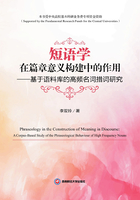
Conventions used in this book
Italics
a. used in the running text to indicate the words or phrases under analysis or discussion, e.g. the high frequency noun time, and the phrases big time and at the same time;
b. used in the running text to indicate examples from the corpus, e.g. the word time can denote the sense of‘actual time on a clock', as in this example What time is it? Three-thirty.
CAPITALS
used to indicate conceptual metaphors(e.g. TIME IS MONEY)and conceptual domains(e.g. TIME or MONEY).
small capitals
used to indicate lemma(all word forms of an item), e. g. spend as the lemma form of the verb spend, or make as the lemma form of the verb make.
“double quotation marks”
a. used to indicate citations from others'work, e.g. “studies on the actual treatment of phraseology in ELT material are rare”(Meunier and Gouverneur 2007:121);
b. used to indicate terminology in this book, e.g. the term“phraseology”or the term“collocation”.
‘single quotation marks’
a. used to indicate a word or phrase which is used vaguely or broadly, e. g.meaning at the ‘discourse'level, or the ‘semantic'role of phraseology in language use;
b. used to indicate concepts or meanings/senses, e.g. the concept of‘money'or‘spending money', or the sense of‘occasion'associated with the word time;
c. used occasionally to indicate a pattern and differentiate it from other words in the running text, e.g. the discussion of ‘spend time with n.'in Section 6.2, or the patterns‘it v-link time to-inf.'and‘at the time of N'in Section 7.4.